Minimalist interior design is a style that has been gaining popularity in recent years. It is characterised by simplicity, functionality, and the use of clean lines. The philosophy behind this style is that less is more, and it is all about creating spaces that are uncluttered and free from unnecessary ornamentation.
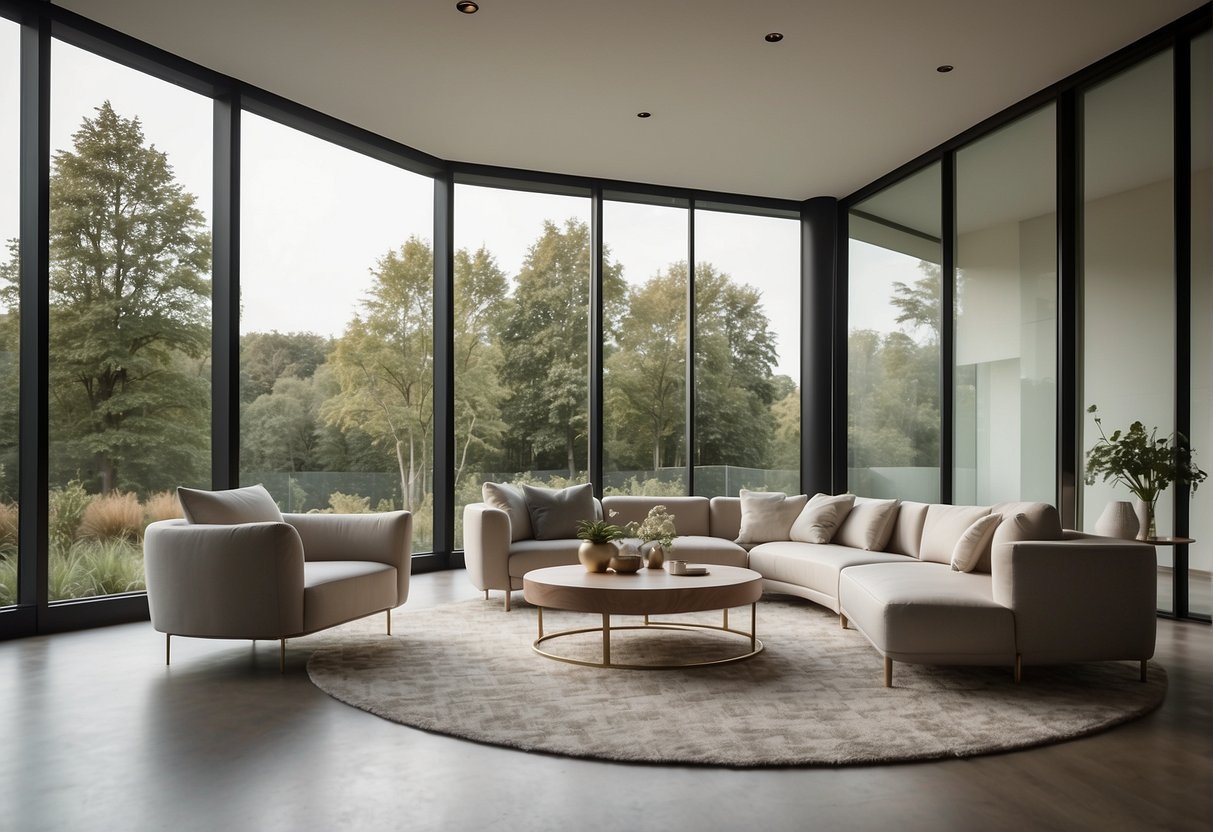
At the heart of minimalist interior design is the belief that our surroundings have a profound impact on our well-being. By creating spaces that are calm and uncluttered, we can reduce stress and improve our overall quality of life. This style is all about creating a sense of harmony and balance, and it is achieved through the use of fundamental principles such as proportion, scale, and balance.
To create a minimalist space, it is important to focus on the essential design elements. This includes the use of neutral colours, clean lines, and simple shapes. The aim is to create a space that is uncluttered and free from unnecessary decoration. By doing so, you can create a space that is both calming and visually appealing.
Key Takeaways
- Minimalist interior design is all about simplicity, functionality, and the use of clean lines.
- The philosophy behind this style is that less is more, and it is all about creating spaces that are uncluttered and free from unnecessary ornamentation.
- To create a minimalist space, it is important to focus on essential design elements such as neutral colours, clean lines, and simple shapes.
The Essence of Minimalism
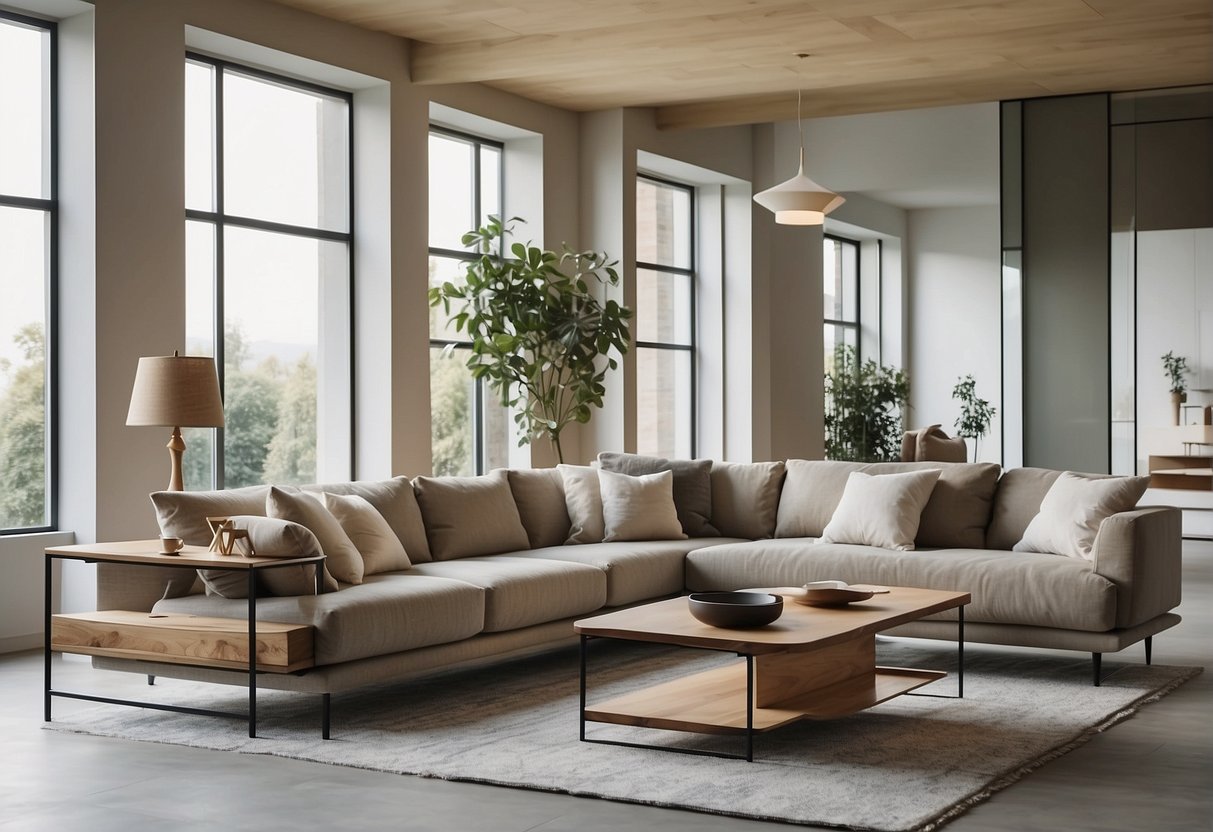
Minimalism is a design movement that has been around for decades. It is not just a buzzword; it is a way of life. At its core, it is about stripping away the unnecessary, focusing on functionality, and creating a sense of tranquility. In this section, we will explore the essence of minimalism and how it is different from other design styles.
Defining Minimalism
Minimalism is all about simplicity. It is a philosophy that revolves around the idea that less is more. This means that you should only keep what you need and get rid of everything else. In minimalism, clean lines, neutral colours, and a lack of unnecessary decoration define the space. The focus is on the essentials and functionality, rather than on superficial aesthetics.
Minimalism vs. Other Styles
Minimalism is often compared to other design styles like modernism, contemporary, and Scandinavian. While these styles share some similarities, they are not the same. Minimalism is more about simplicity, functionality, and tranquility, while modernism is more about experimentation and innovation. Contemporary design is more about blending different styles, while Scandinavian design is more about warmth and comfort.
In conclusion, minimalism is a design movement that has been around for decades. It is all about stripping away the unnecessary, focusing on functionality, and creating a sense of tranquility. Minimalism is not just a design style, it is a way of life. By embracing minimalism, you can create a space that is not only beautiful but also functional and peaceful.
Fundamental Principles
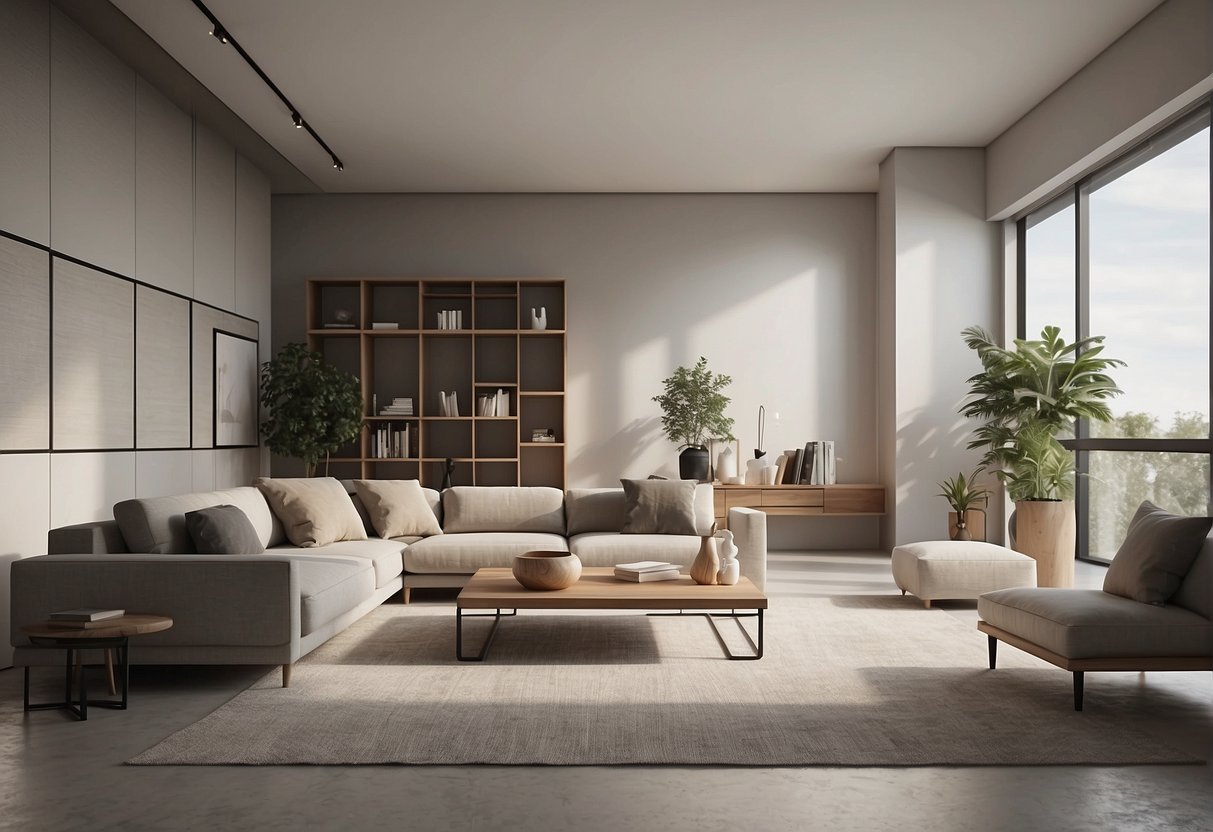
Minimalist interior design is all about creating a space that is clean, simple, and clutter-free. It’s a design style that emphasises functionality over form, and quality over quantity. Here are some fundamental principles of minimalist interior design:
Simplicity in Form and Function
One of the most important principles of minimalist interior design is simplicity in form and function. This means that the design should be simple and straightforward, with no unnecessary details or embellishments. The focus should be on the function of the space, and how it can be optimised for maximum efficiency.
The ‘Less Is More’ Approach
Another key principle of minimalist interior design is the ‘less is more’ approach. This means that you should aim to have as few items in the space as possible, while still maintaining functionality. This can be achieved by carefully selecting each piece of furniture and decor, and only including items that are essential.
Quality Over Quantity
Finally, minimalist interior design is all about quality over quantity. This means that you should invest in high-quality materials and furniture, rather than buying lots of cheap, low-quality items. By investing in quality pieces that are built to last, you can create a space that is both functional and beautiful.
In summary, the fundamental principles of minimalist interior design are simplicity in form and function, the ‘less is more’ approach, and quality over quantity. By following these principles, you can create a space that is both functional and beautiful, with a focus on clean lines, simple shapes, and high-quality materials.
Design Elements
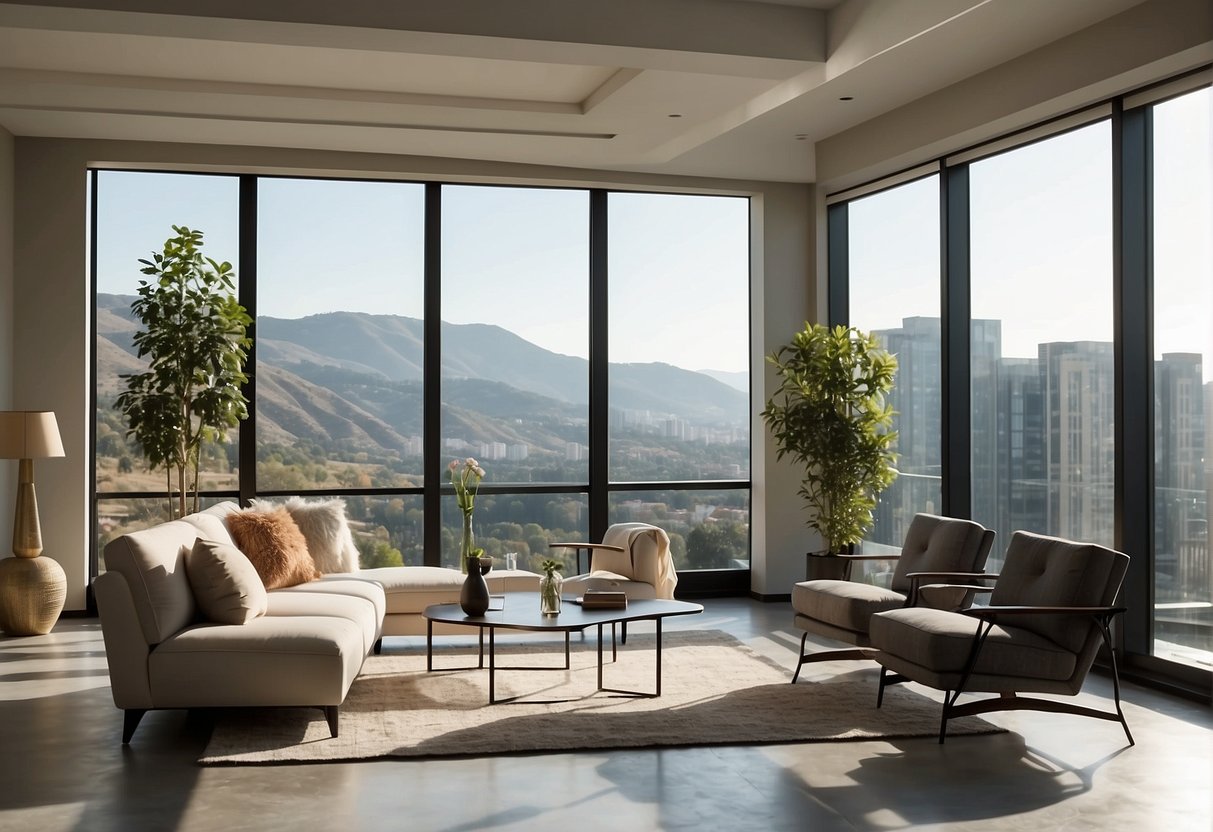
When it comes to minimalist interior design, there are a few key elements to keep in mind. These elements are what make a minimalist space feel calm, serene, and open. In this section, we’ll take a look at three of the most important design elements: colour and contrast, textures and materials, and light and flow.
Colour and Contrast
One of the most important aspects of minimalist interior design is the colour palette. To create a minimalist space, you should stick to a neutral colour palette, such as white, beige, or grey. These colours create a sense of calm and serenity, and they also make the space feel larger and more open.
However, just because you’re using a neutral colour palette doesn’t mean you have to sacrifice contrast. In fact, contrast is an important part of minimalist design. You can create contrast by using different shades of the same colour, or by incorporating black or other dark colours into the space. This will help create visual interest and depth.
Textures and Materials
Textures and materials are also important elements of minimalist interior design. When choosing materials, it’s best to stick to natural materials, such as wood, stone, and metal. These materials create a sense of warmth and depth, and they also add a touch of nature to the space.
When it comes to textures, you should aim for simplicity. Textures should be subtle and understated, such as a smooth concrete floor or a linen sofa. This will help create a sense of calm and serenity in the space.
Light and Flow
Finally, light and flow are crucial elements of minimalist interior design. When it comes to lighting, you should aim for natural light whenever possible. This means using large windows or skylights to let in as much natural light as possible. If natural light isn’t an option, you can use artificial lighting to mimic natural light.
Flow is also important in minimalist design. You should aim for an open, airy feel in the space. This means avoiding clutter and keeping furniture to a minimum. You should also arrange furniture in a way that allows for easy movement through the space.
Overall, these design elements are what make minimalist interior design so appealing. By focusing on colour and contrast, textures and materials, and light and flow, you can create a space that feels calm, serene, and open.
Creating a Minimalist Space
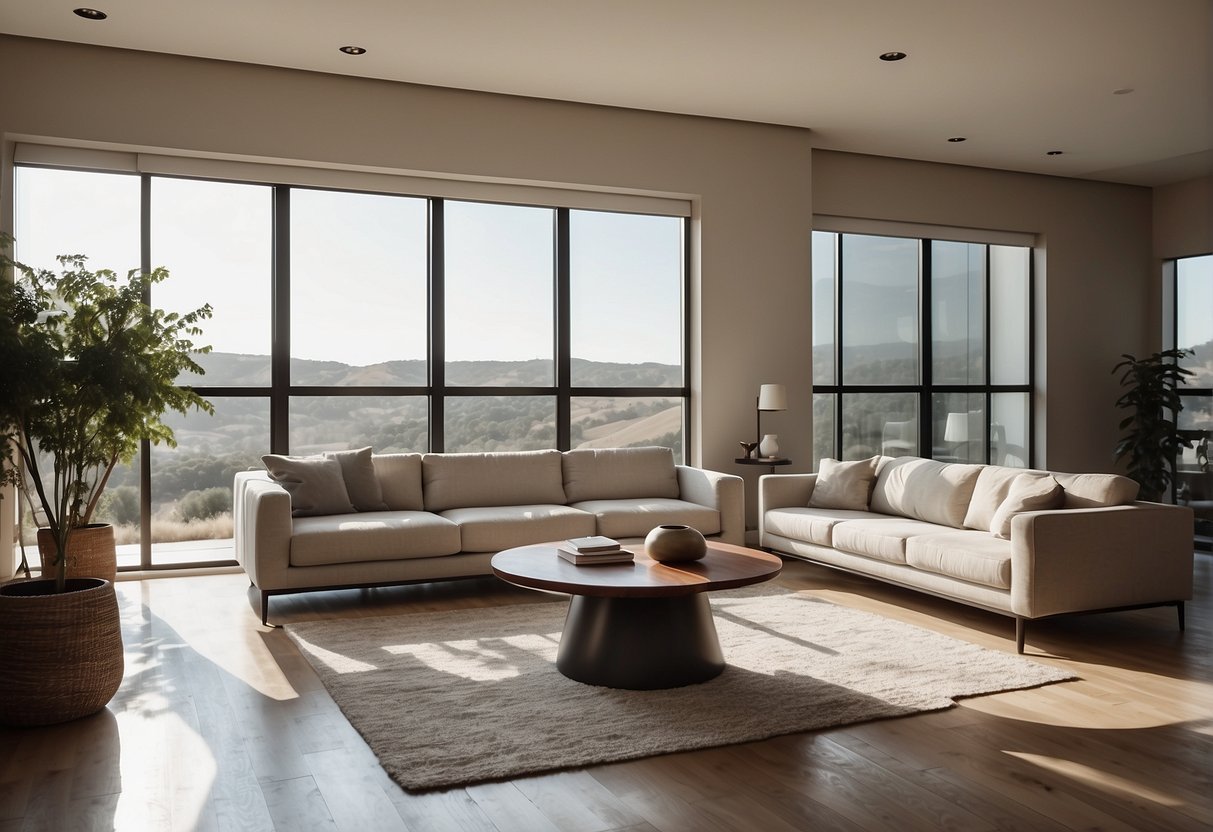
Creating a minimalist space can seem like a daunting task, but with the right strategies, you can achieve a clean and uncluttered living space that promotes calm and relaxation. Here are some tips to help you get started.
Decluttering Strategies
The first step in creating a minimalist space is to declutter. This means getting rid of anything that is no longer serving a purpose or bringing you joy. Start by going through each room and getting rid of items that are broken, unused, or no longer needed. You can donate or sell items that are still in good condition, and recycle or dispose of anything that is no longer usable.
To make the decluttering process easier, try breaking it down into smaller tasks. For example, you could start by decluttering one room at a time, or by focusing on one category of items (such as clothing or books) at a time.
Selecting Minimalist Furniture
When it comes to selecting furniture for your minimalist space, less is definitely more. Look for pieces that are simple and functional, with clean lines and minimal ornamentation. Avoid furniture that is bulky or overly decorative, as this can make your space feel cluttered and overwhelming.
Some good options for minimalist furniture include modular sofas, sleek coffee tables, and minimalist shelving units. You can also consider multipurpose furniture, such as a bed with built-in storage or a coffee table that doubles as a desk.
Incorporating Statement Pieces
While the goal of minimalist design is to keep things simple and uncluttered, that doesn’t mean you can’t incorporate a few statement pieces into your space. A statement piece is a bold, eye-catching item that adds personality and interest to your room.
When selecting a statement piece, look for something that is high-quality and timeless, rather than trendy or disposable. This could be a piece of art, a unique piece of furniture, or a decorative object that reflects your personal style.
By following these strategies, you can create a minimalist space that is both functional and beautiful. Remember to focus on cleanliness and simplicity, and to choose furniture and decor that serves a purpose and brings you joy.
Minimalist Rooms

If you’re looking to create a minimalist interior design, the rooms in your home are the perfect place to start. Minimalist rooms are all about simplicity and functionality. They are designed to be clutter-free, with clean lines, neutral colours and a focus on the essentials. Here are some ideas for creating a minimalist bedroom, living room and dining room.
The Tranquil Minimalist Bedroom
The minimalist bedroom is all about creating a calm and peaceful environment. To achieve this, you want to keep your colour palette neutral and soothing. Think shades of white, beige, grey and pastels. Avoid bold colours and patterns, which can be too distracting.
In terms of furniture, keep it simple. A bed, a bedside table and a wardrobe are all you need. Choose pieces with clean lines and minimal embellishments. For storage, consider built-in wardrobes or under-bed storage to keep clutter at bay.
The Sleek Minimalist Living Room
The minimalist living room is all about creating a sleek and modern space. To achieve this, you want to keep your colour palette neutral and monochromatic. Think shades of black, white and grey. You can add a pop of colour with a piece of artwork or a decorative cushion, but keep it minimal.
In terms of furniture, keep it simple. A sofa, a coffee table and a TV stand are all you need. Choose pieces with clean lines and minimal embellishments. For storage, consider built-in shelves or a minimalist bookcase.
The Sophisticated Minimalist Dining Room
The minimalist dining room is all about creating a sophisticated and elegant space. To achieve this, you want to keep your colour palette neutral and muted. Think shades of white, beige, grey and black. You can add a pop of colour with a vase of flowers or a decorative bowl, but keep it minimal.
In terms of furniture, keep it simple. A dining table and chairs are all you need. Choose pieces with clean lines and minimal embellishments. For lighting, consider a statement pendant light or a minimalist chandelier.
Overall, creating a minimalist interior design is all about simplicity, functionality and sophistication. By following these tips, you can create a space that is both stylish and practical.
Materials and Finishes
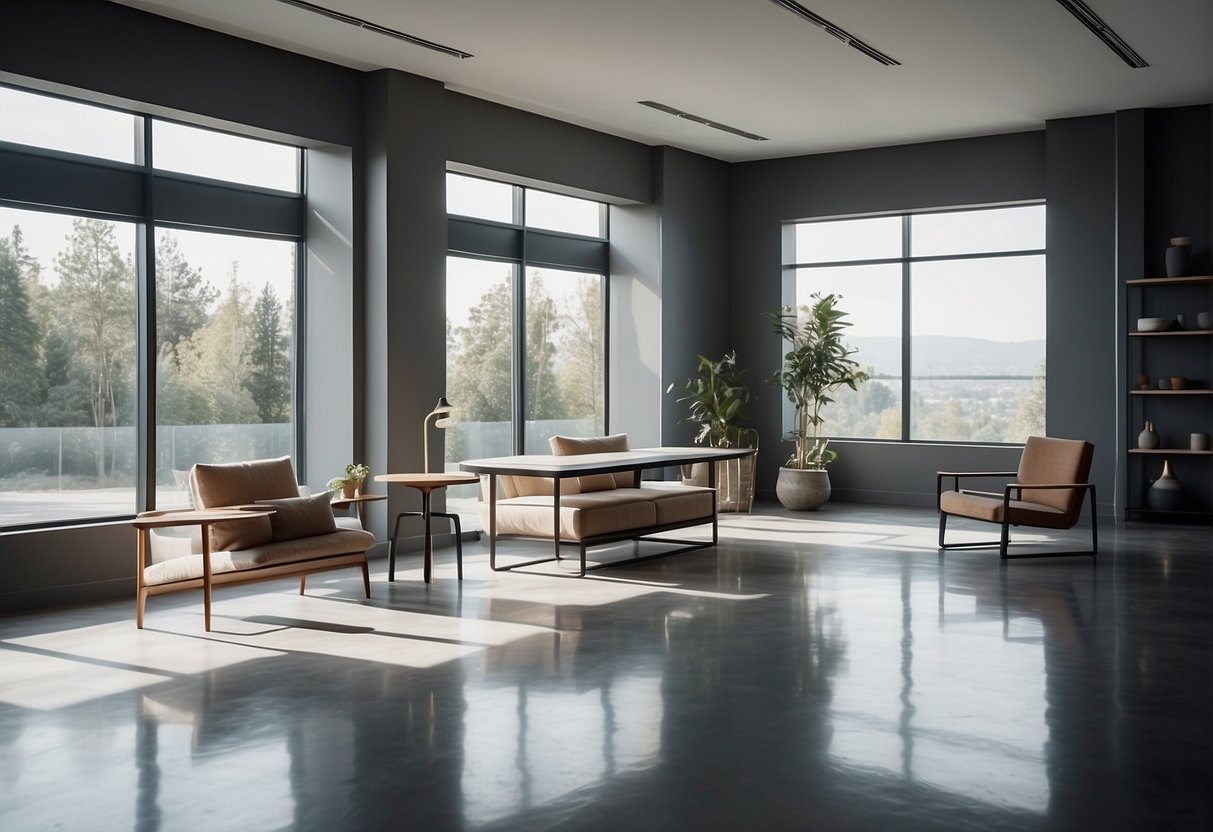
When it comes to minimalist interior design, the materials and finishes you choose play a crucial role in creating a serene and uncluttered space. In this section, we’ll explore two important aspects of materials and finishes – embracing natural elements and choosing sustainable options.
Embracing Natural Elements
One of the key principles of minimalist interior design is to bring the outdoors inside. This means using natural materials such as wood and stone to create a warm and inviting atmosphere. Wood, in particular, is a popular choice for flooring, furniture and accent pieces as it adds a sense of warmth and texture to a room.
Stone, on the other hand, is perfect for creating a sense of calm and serenity. It can be used for flooring, walls, and even as a statement piece. When paired with natural light, stone can create a beautiful play of shadows and light, adding depth and character to a room.
Choosing Sustainable Options
As we become more conscious of our impact on the environment, it’s important to choose materials and finishes that are sustainable and eco-friendly. Organic textiles, for example, are a great choice for curtains, cushions and bedding as they are made from natural materials such as cotton, linen and wool.
In addition, sustainable wood and bamboo are popular choices for flooring, furniture and accent pieces. These materials are not only durable and long-lasting, but they are also renewable and biodegradable, making them an eco-friendly choice.
By embracing natural elements and choosing sustainable options, you can create a minimalist interior that is not only beautiful but also environmentally conscious.
Aesthetic Details
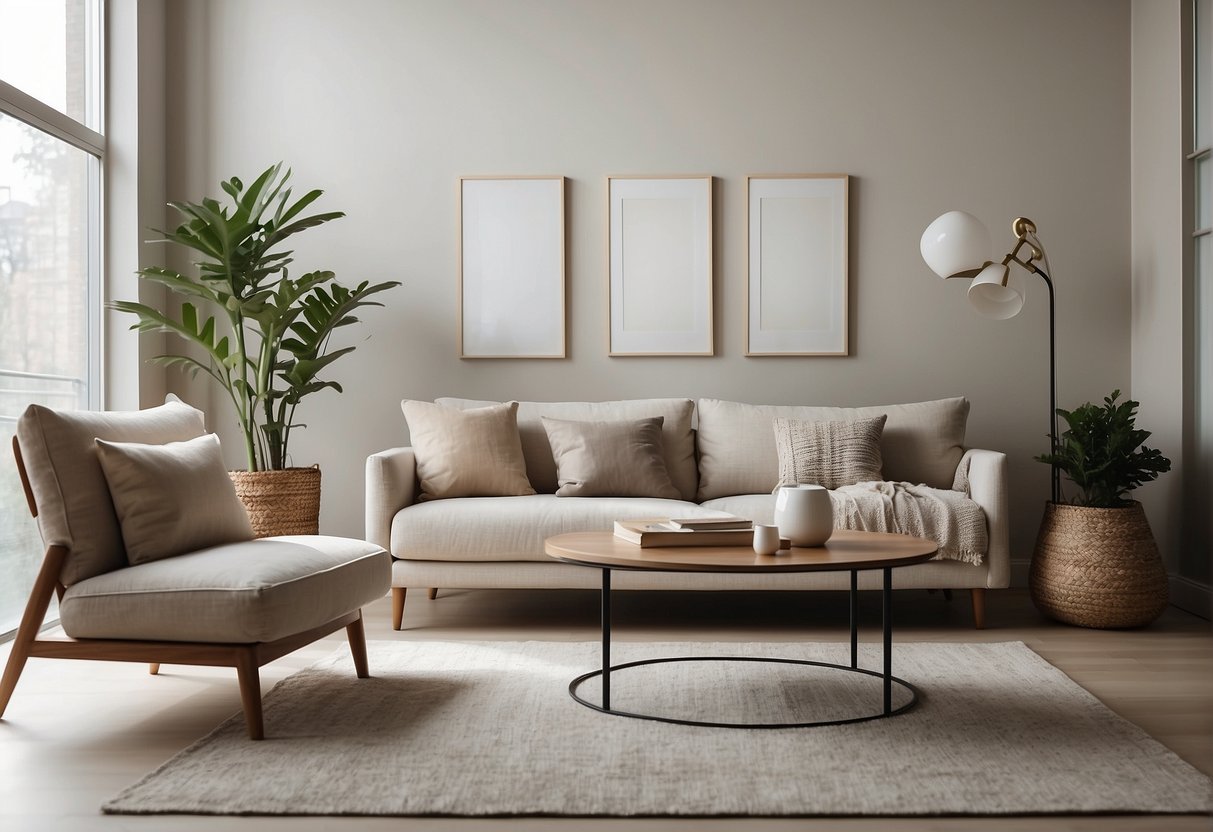
When it comes to minimalist interior design, paying attention to the finer details can make all the difference. Here are some aesthetic details that can help you achieve a cohesive and stylish minimalist look.
Balancing Monochromatic Themes
Monochromatic themes are a staple of minimalist design, but it’s important to strike a balance. Too much of one colour can make a space feel sterile and uninviting. Instead, experiment with different shades and textures within your chosen colour palette. For example, a white room can be brought to life by incorporating off-white, cream, and beige tones. Adding a touch of black or grey can also help to ground the space and prevent it from feeling too washed out.
Adding Greenery and Natural Accents
Greenery and natural accents can add warmth and texture to a minimalist space. Plants are a great way to bring life and colour into a room, and they also have air-purifying benefits. Choose plants that are easy to care for, such as succulents or snake plants. You can also incorporate natural materials such as wood, stone, or woven textiles to add depth and interest to your space.
In addition to plants, consider adding floral arrangements as a way to introduce pattern and colour into your minimalist space. Opt for simple arrangements with a few stems in a single colour, or mix and match different types of flowers for a more eclectic look.
Overall, paying attention to the small details can help to elevate your minimalist interior design. By balancing monochromatic themes and incorporating greenery and natural accents, you can create a space that is both stylish and inviting.
Cultural Influences
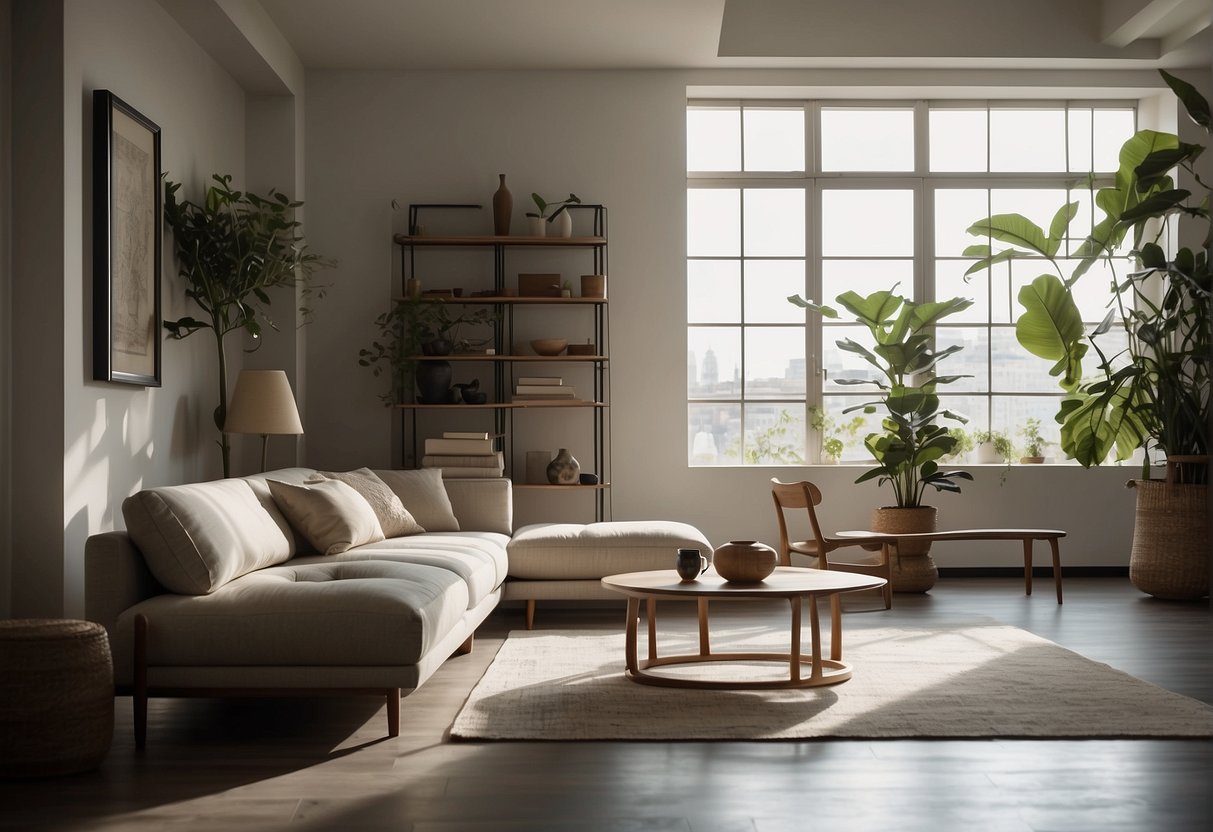
Minimalist interior design has been influenced by various cultures, each bringing its unique touch to the concept. Two of the most significant cultural influences on minimalist interior design are Scandinavian and Japanese.
Scandinavian Minimalism
Scandinavian minimalism is characterised by simplicity, functionality, and natural materials. It is a design style that emerged in the 1950s in Denmark, Finland, Iceland, Norway, and Sweden. The idea behind Scandinavian minimalism is to create a space that is both beautiful and functional, with clean lines, neutral colours, and a focus on natural light.
One of the key features of Scandinavian minimalism is the use of natural materials such as wood, stone, and leather. These materials are often left untreated or with minimal processing to retain their natural texture and appearance. The use of natural materials is also reflected in the choice of furniture, which is often made from wood or other natural materials.
Japanese Wabi-Sabi
Japanese Wabi-Sabi is a design philosophy that values simplicity, imperfection, and the beauty of natural materials. It is derived from Zen Buddhism and has been influencing Japanese design for centuries. The concept of Wabi-Sabi is to create a space that is imperfect, rustic, and unpretentious.
One of the key features of Japanese Wabi-Sabi is the use of natural materials such as wood, bamboo, and paper. These materials are often left untreated or with minimal processing to retain their natural texture and appearance. The use of natural materials is also reflected in the choice of furniture, which is often made from wood or other natural materials.
In conclusion, different cultures have contributed to the development of minimalist interior design. Scandinavian and Japanese cultures have played a significant role in shaping this design style. The use of natural materials, simplicity, and functionality are some of the key features of minimalist interior design that have been influenced by these cultures.
Architectural Considerations
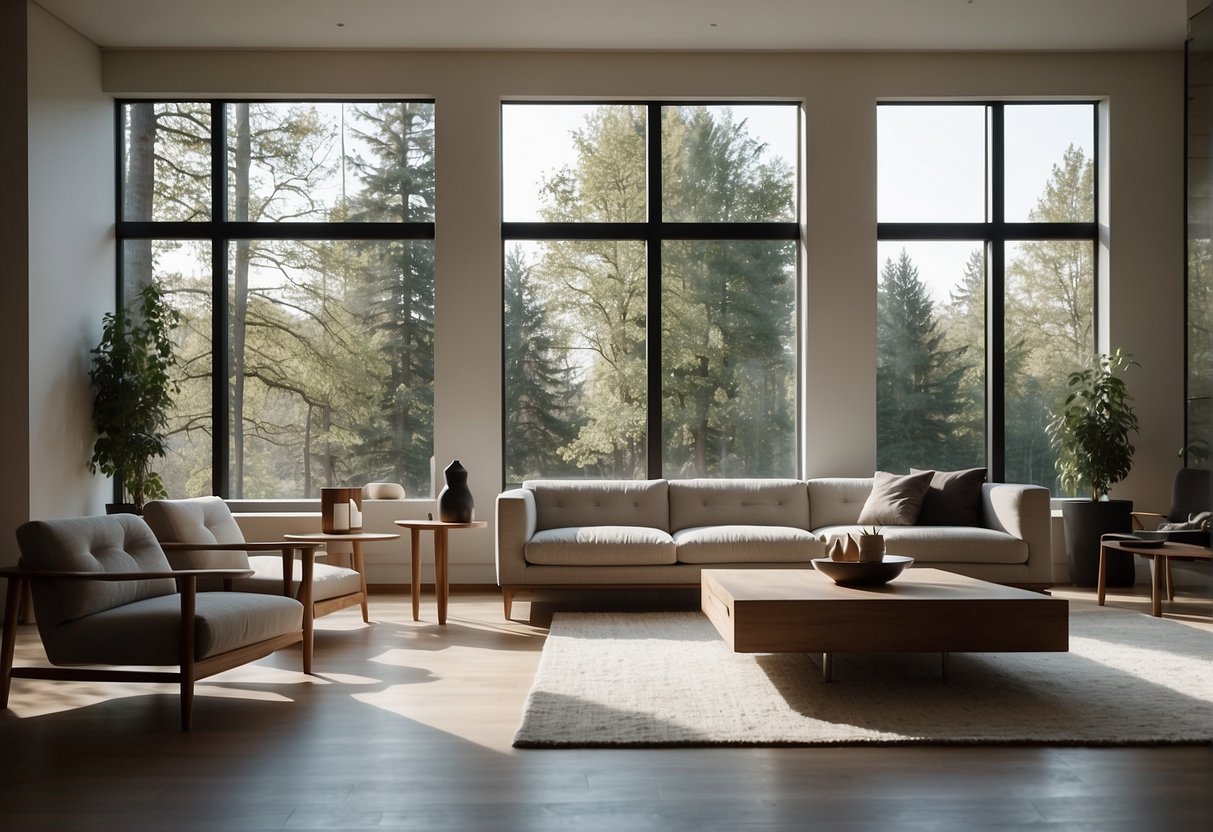
When designing a minimalist interior, there are certain architectural considerations that you should keep in mind. Here are some key factors to consider:
Designing Minimalist Structures
Minimalist interior design requires a minimalist structure. That means that the architecture of your home or building should be simple and uncluttered. Avoid ornate mouldings, complicated archways, and other decorative elements that can detract from the simplicity of your space.
Instead, focus on clean lines, simple shapes, and a limited colour palette. Think about how the space will be used and design accordingly. For example, if you want an open floor plan, you may need to remove walls or create large openings between rooms.
The Role of Open Spaces
Open spaces are a key element of minimalist interior design. They help to create a sense of spaciousness and allow natural light to flow throughout the space. When designing your minimalist interior, consider how you can maximise open spaces.
One way to do this is to create an open floor plan. This involves removing walls between rooms to create a more open and airy space. Another option is to use glass walls or partitions to create a sense of separation without closing off the space completely.
Whatever approach you take, be sure to keep the space uncluttered and free of unnecessary furniture and decor. This will help to create a sense of calm and tranquillity in your minimalist interior.
In summary, when designing a minimalist interior, it’s important to consider the architectural elements of your space. Keep the structure simple and uncluttered, and maximise open spaces to create a sense of spaciousness and tranquillity. By following these principles, you can create a minimalist interior that is both beautiful and functional.
Living the Minimalist Lifestyle
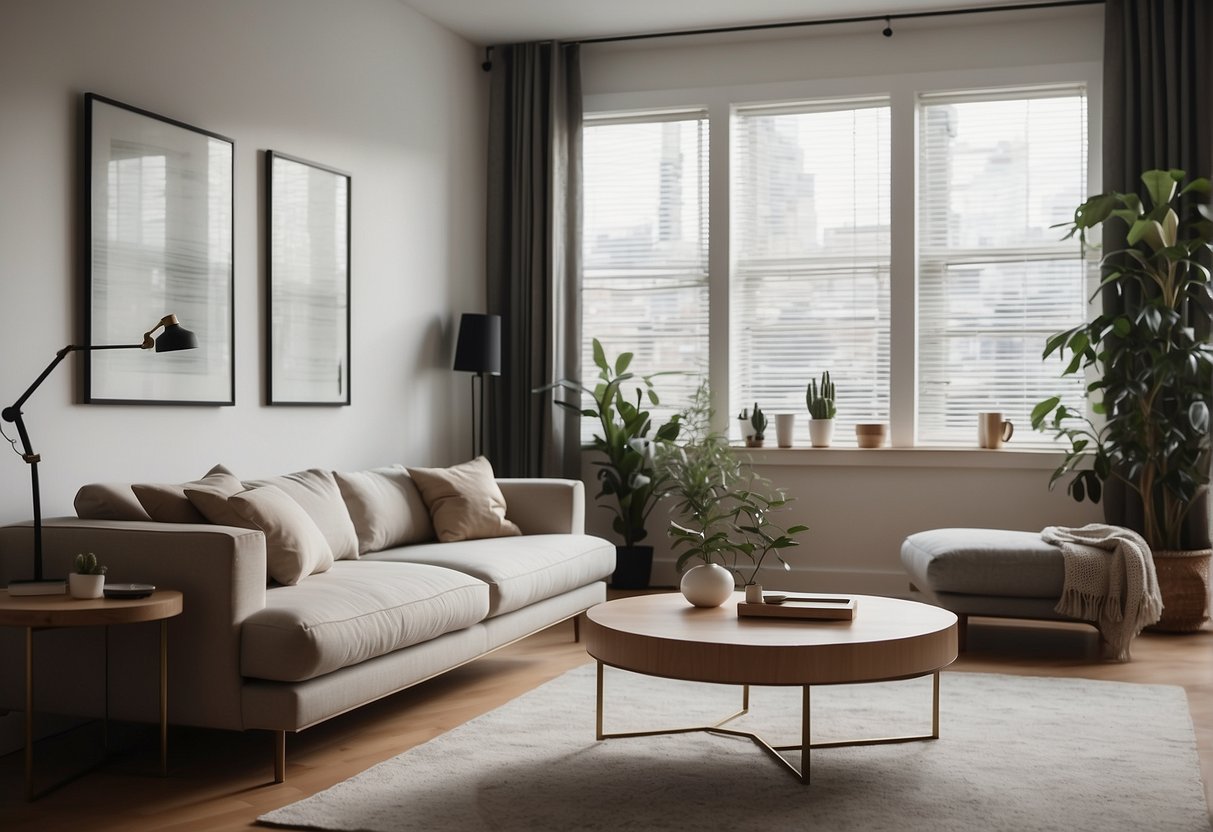
Living a minimalist lifestyle means adopting habits that promote simplicity and reduce clutter. It involves creating a serene atmosphere that promotes calmness and wellbeing. Minimalist design and decor are key components of a minimalist home design.
Adopting Minimalist Habits
To adopt minimalist habits, you need to start by decluttering your home. This involves getting rid of items you no longer need or use. You can donate, sell, or recycle these items to reduce waste and promote sustainable living.
Once you have decluttered your home, you can start to focus on simple living. This means reducing your consumption and only buying what you need. You can also adopt habits such as meal planning and reducing your use of single-use plastics to promote sustainable living.
The Impact on Wellbeing
Living a minimalist lifestyle can have a positive impact on your wellbeing. A clutter-free home can reduce stress and promote a sense of calmness. Minimalist design and decor can create a serene atmosphere that promotes relaxation and a sense of wellbeing.
In addition, adopting minimalist habits can help you to focus on what is important in life. By reducing consumption and simplifying your life, you can free up time and resources to focus on your goals and passions.
Overall, living a minimalist lifestyle can help you to create a home that promotes simplicity, sustainability, and wellbeing. By adopting minimalist habits and embracing minimalist design and decor, you can create a calm and serene atmosphere that promotes a sense of calmness and wellbeing.
Frequently Asked Questions
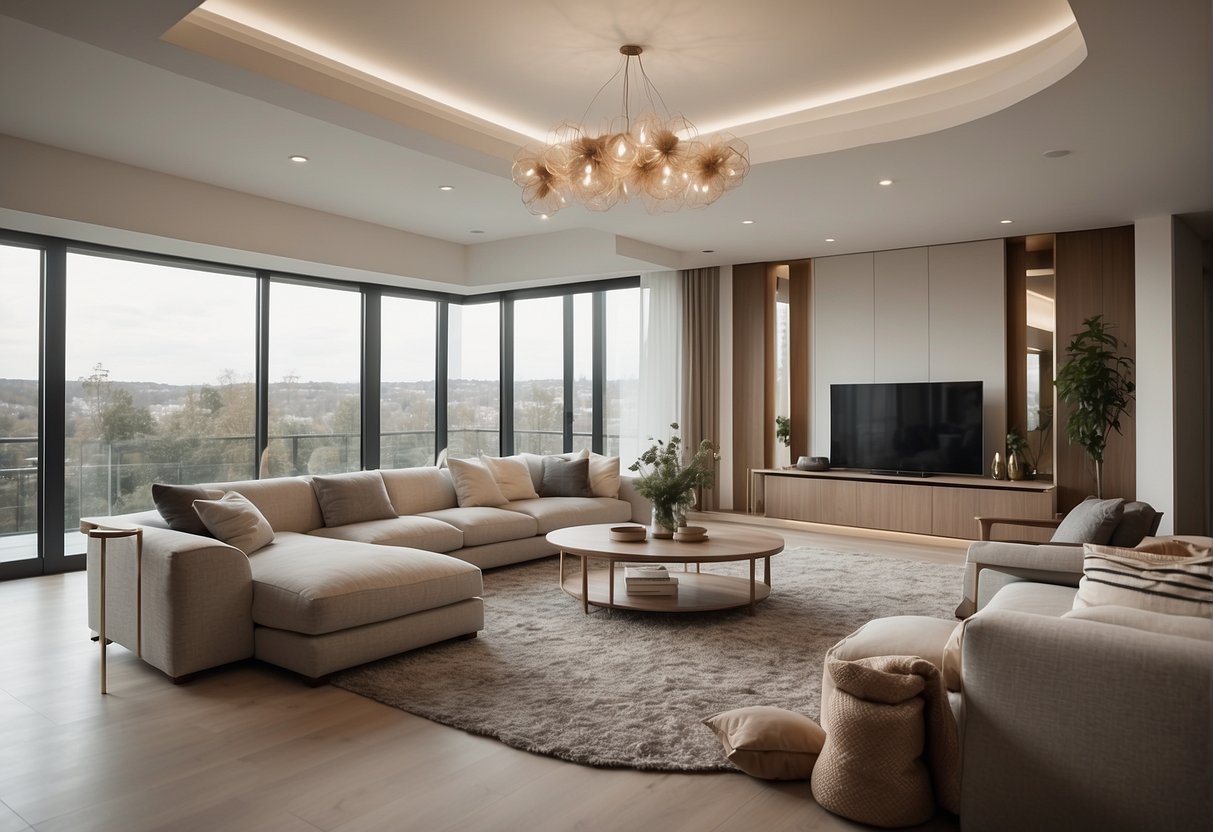
How can you transform a living room to reflect a minimalist aesthetic?
To transform your living room to reflect a minimalist aesthetic, start by decluttering the space. Remove any unnecessary items, and keep only the essentials. Choose furniture pieces that are simple, functional and have clean lines. Use a neutral colour palette, and limit the number of colours you use. Keep the walls and floors simple, with a focus on texture rather than pattern. Add a few carefully chosen accessories, such as a piece of artwork or a vase, to add interest to the space.
What are the essential characteristics that define minimalist interior design?
Minimalist interior design is defined by simplicity, functionality, and a focus on the essentials. The use of clean lines, neutral colours, and natural materials is key. The space should be uncluttered, with only the necessary furniture and accessories. The focus is on creating a calm, peaceful environment that allows you to relax and unwind.
In what ways does minimalist design make use of materials to create a simple yet elegant space?
Minimalist design makes use of natural materials such as wood, stone, and metal to create a simple yet elegant space. The focus is on the beauty of the materials themselves, rather than on elaborate decoration. The use of texture is also important, with a focus on creating a tactile environment that engages the senses.
What furniture pieces are considered staples in a minimalist home?
The furniture pieces that are considered staples in a minimalist home are those that are simple, functional, and have clean lines. Examples include a sofa, a coffee table, a dining table and chairs, and a bed. The focus is on quality rather than quantity, so invest in pieces that are well-made and will last for years.
How can a small house be styled to embody minimalist principles without feeling bare?
To style a small house to embody minimalist principles without feeling bare, focus on creating a sense of space and light. Use a neutral colour palette, and keep the walls and floors simple. Choose furniture pieces that are multi-functional, such as a sofa bed or a storage ottoman. Use mirrors to reflect light and create the illusion of space. Add a few carefully chosen accessories, such as a plant or a piece of artwork, to add interest to the space.
What philosophies underpin the minimalist approach to interior decorating?
The philosophies that underpin the minimalist approach to interior decorating are simplicity, functionality, and mindfulness. The focus is on creating a space that is uncluttered, peaceful, and allows you to live in the moment. The aim is to create a sense of calm and tranquillity, and to promote a more mindful way of living.


